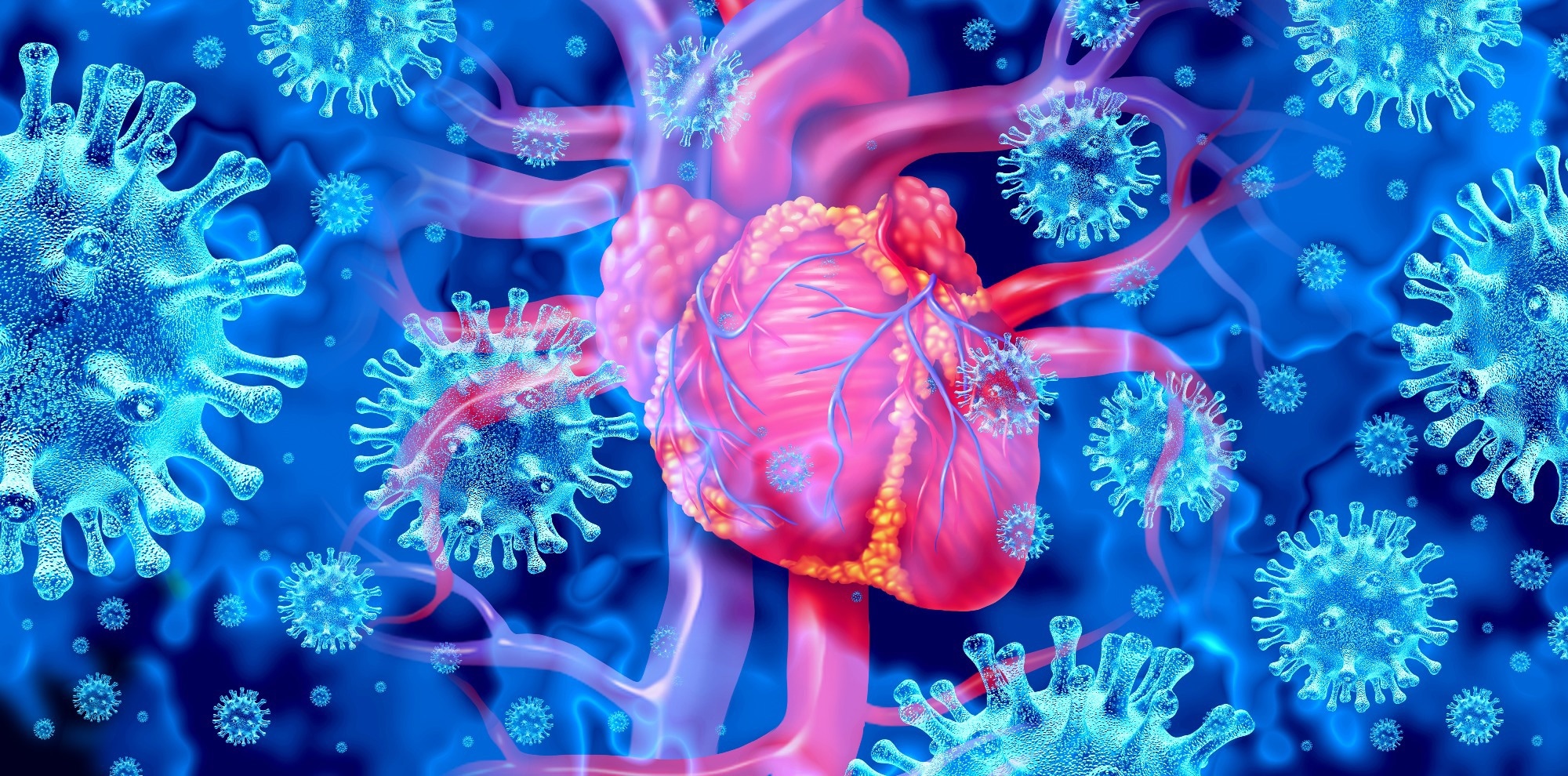A new study, published in Emerging Infectious Diseases, found that myocardial infiltration could cause myocarditis during monkeypox virus infection.
 Study: Myocarditis Attributable to Monkeypox Virus Infection in 2 Patients, United States, 2022. Image Credit: Lightspring/Shutterstock
Study: Myocarditis Attributable to Monkeypox Virus Infection in 2 Patients, United States, 2022. Image Credit: Lightspring/Shutterstock
The article reported that two monkeypox virus-infected immunocompetent patients in the United States were hospitalized for signs of viral myocarditis and subsequently discharged upon symptom improvement.
Background
Viruses that cause monkeypox in Central and West Africa have caused monkeypox virus (MPXV) outbreaks in other parts of the world from time to time. MPXV, a zoonotic DNA orthopoxvirus, is related to the smallpox virus. It is transmitted through large respiratory droplets and close or direct contact with an infected animal.
There is typically a fever at the beginning of the illness, followed by the appearance of multiple papular lesions and inflammatory lesions on the skin, including vesiculopustular rash and ulcers. The infection can cause complications like pneumonitis, encephalitis, keratitis, secondary bacterial infections, acute kidney injury, and myocarditis. Young and immunocompromised individuals are at a higher risk of monkeypox virus infections.
Generally, viral infections are associated with myocarditis. However, the pathophysiology of orthopoxvirus-induced myocarditis remains unknown.
The study
Two patients were recruited for this study with prior informed consent. Patient 1 was a 32-year-old man with MPXV infection – likely due to asexual contact with a male partner, who was admitted for suspected myocarditis. His records suggested a viral infection with cervical lymphadenopathy, rash, and a single penile lesion. He also reported chest pain and dyspnea, with no accounts of SARS-CoV-2 or smallpox vaccination or infection.
Patient 2 was a 37-year-old man who suffered from rash, fever, dyspnea, and reduced exercise tolerance. He was reported to have had sexual encounters with multiple partners 13 days before hospitalization. Five days after exposure, his symptoms commenced with bilateral inguinal lymphadenopathy, followed by multiple skin lesions in both arms and a lesion at the base of the penis, and after that, fatigue, low-grade fever, and chills.
Findings
Physical examination of patient 1 showed numerous erythematous vesiculopapular, pustular lesions with erythematous borders, inguinal lymphadenopathy (left), and ulceration at the base of the glans penis. The serum samples showed the presence of p24 indicative of nonreactive human immunodeficiency virus (HIV), negative HIV and hepatitis C on polymerase chain reaction (PCR) tests, and a rapid plasma reagin titer of 1:2.
Cardiac biomarkers such as high-sensitivity troponin T and N-terminal prohormone B-type natriuretic peptide were elevated. Electrocardiogram exhibited a normal sinus rhythm, and the chest radiograph did not detect any abnormality.
The C-reactive protein was 0.5 mg/dL, and the erythrocyte sedimentation rate (ESR) was 11 mm/h. The patient samples were negative for enterovirus, adenovirus, SARS-CoV-2 nucleocapsid antibodies, parvovirus, cytomegalovirus, Epstein–Barr virus, coccidioidomycosis, and human herpesvirus 6.
The patient was treated for monkeypox infection and syphilis. Echocardiography (ECG) post-hospitalization showed an ejection fraction of 69%. The patient was isolated even after the troponin levels were decreased post-hospitalization and the rash improved, which preceded the crusting and exfoliation of the lesions. He was discharged only after ten days with appropriate isolation guidelines and was prescribed oral tecovirimat for 14 days.
During the physical examination, patient 2 had multiple skin lesions with central umbilication in the lower pubic and inguinal areas, while the upper extremities showed smaller vesicular lesions. Increased troponin I levels were detected in serum. The B-type natriuretic peptide level was 49 pg/mL; Electrocardiogram demonstrated normal sinus rhythm with T wave inversions in the inferior and anterolateral leads; ECG showed normal ventricles and systolic function with normal regional wall motion, and the diastolic parameters were age-appropriate.
The MPXV infection was confirmed by nonvariola orthopoxvirus PCR. The patient was negative for HIV and SARS-CoV-2. After four days of hospitalization, the dyspnea resolved, and cardiac enzymes normalized. The patient did not require specific treatment for monkeypox or myocarditis and was discharged after symptom improvement with appropriate isolation guidelines.
Based on the epidemiological trends, both patients likely had the clade IIb infection of the circulating MPXV. The viral infection was the most probable cause of myocarditis in both patients. However, other potential etiologies and viral co-infections could not be excluded.
Inference
Both patients improved 10-12 days after symptom onset. Direct myocardial infiltration of the MPXV was speculated as the probable cause for monkeypox-related myocarditis.
Antivirals could be an effective treatment strategy.